Screening herbal and natural product libraries to aid discovery of novel allosteric modulators of human P2X7
- PMID: 39436616
- PMCID: PMC12062478
- DOI: 10.1007/s11302-024-10055-6
Screening herbal and natural product libraries to aid discovery of novel allosteric modulators of human P2X7
Abstract
P2X7 is an emerging therapeutic target for several disorders and diseases due to its role in inflammatory signalling. This study aimed to exploit the unique chemical libraries of plants used in traditional medicinal practices to discover novel allosteric modulators from natural sources. We identified several compounds from the NCI Natural Product library as P2X7 antagonists including confertifolin and digallic acid (IC50 values 3.86 µM and 4.05 µM). We also identified scopafungin as a novel positive allosteric modulator of hP2X7. Screening a traditional medicinal plant extract library revealed 39 plant species with inhibitory action at hP2X7 and 17 plant species with positive allosteric modulator activity. Using computational docking to filter identified components from these plant species and determine potential antagonists, we investigated nine purified chemicals including flavonoids quercetin, kaempferol, ECG, and EGCG. These were shown to inhibit ATP-induced YO-PRO-1 uptake into HEK-hP2X7 cells; however, we also showed that all four flavonoids demonstrated significant assay interference using a cell-free DNA YO-PRO-1 fluorescence test. One plant extract, Dioscorea nipponica, demonstrating positive modulator activity was investigated, and dioscin was identified as a glycoside with PAM activity in ATP-induced YO-PRO-1 uptake assay and whole-cell patch-clamp recordings. However, membrane permeabilisation was observed following application > 10 min limiting the use of dioscin as a pharmacological tool. This work describes a useful workflow with multiple assays for the identification of novel allosteric modulators for human P2X7.
Keywords: Traditional Medicine; Allosteric modulator; Confertifolin; Digallic acid; Dioscin; Flavonoids; P2X7; Scopafungin.
© 2024. The Author(s).
Conflict of interest statement
Declarations. Ethical approval: Not applicable. Competing interests: LB currently works for Springer Nature in article pipeline management as part of the Research Publishing & Editorial group.
Figures
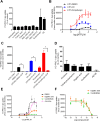
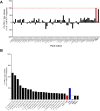
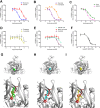

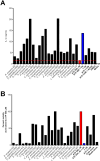
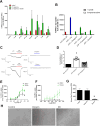
Similar articles
-
Insights into the Structure-Activity Relationship of Glycosides as Positive Allosteric Modulators Acting on P2X7 Receptors.Mol Pharmacol. 2021 Feb;99(2):163-174. doi: 10.1124/molpharm.120.000129. Epub 2020 Dec 17. Mol Pharmacol. 2021. PMID: 33334897 Free PMC article.
-
The phenothiazine-class antipsychotic drugs prochlorperazine and trifluoperazine are potent allosteric modulators of the human P2X7 receptor.Neuropharmacology. 2013 Dec;75:365-79. doi: 10.1016/j.neuropharm.2013.07.027. Epub 2013 Aug 14. Neuropharmacology. 2013. PMID: 23954492
-
Tanshinone II A sulfonate, but not tanshinone II A, acts as potent negative allosteric modulator of the human purinergic receptor P2X7.J Pharmacol Exp Ther. 2014 Sep;350(3):531-42. doi: 10.1124/jpet.114.214569. Epub 2014 Jun 26. J Pharmacol Exp Ther. 2014. PMID: 24970925
-
The P2X7 receptor channel: recent developments and the use of P2X7 antagonists in models of disease.Pharmacol Rev. 2014 Jul;66(3):638-75. doi: 10.1124/pr.113.008003. Pharmacol Rev. 2014. PMID: 24928329 Review.
-
Ionotropic purinergic receptor 7 (P2X7) channel structure and pharmacology provides insight regarding non-nucleotide agonism.Channels (Austin). 2024 Dec;18(1):2355150. doi: 10.1080/19336950.2024.2355150. Epub 2024 May 19. Channels (Austin). 2024. PMID: 38762911 Free PMC article. Review.
References
-
- Sluyter R (2017) The P2X7 receptor. Adv Exp Med Biol 1051:17–53 - PubMed
-
- Di Virgilio F et al (2017) The P2X7 receptor in infection and inflammation. Immunity 47(1):15–31 - PubMed
-
- Bhattacharya A, Biber K (2016) The microglial ATP-gated ion channel P2X7 as a CNS drug target. Glia 64(10):1772–1787 - PubMed
-
- Ahn YH, Tang Y, Illes P (2023) The neuroinflammatory astrocytic P2X7 receptor: Alzheimer’s disease, ischemic brain injury, and epileptic state. Expert Opin Ther Targets 27(9):763–778 - PubMed
-
- von Mücke-Heim I-A, Deussing JM (2023) The P2X7 receptor in mood disorders: emerging target in immunopsychiatry, from bench to bedside. Neuropharmacology 224:109366 - PubMed
MeSH terms
Substances
Grants and funding
LinkOut - more resources
Full Text Sources
Miscellaneous

